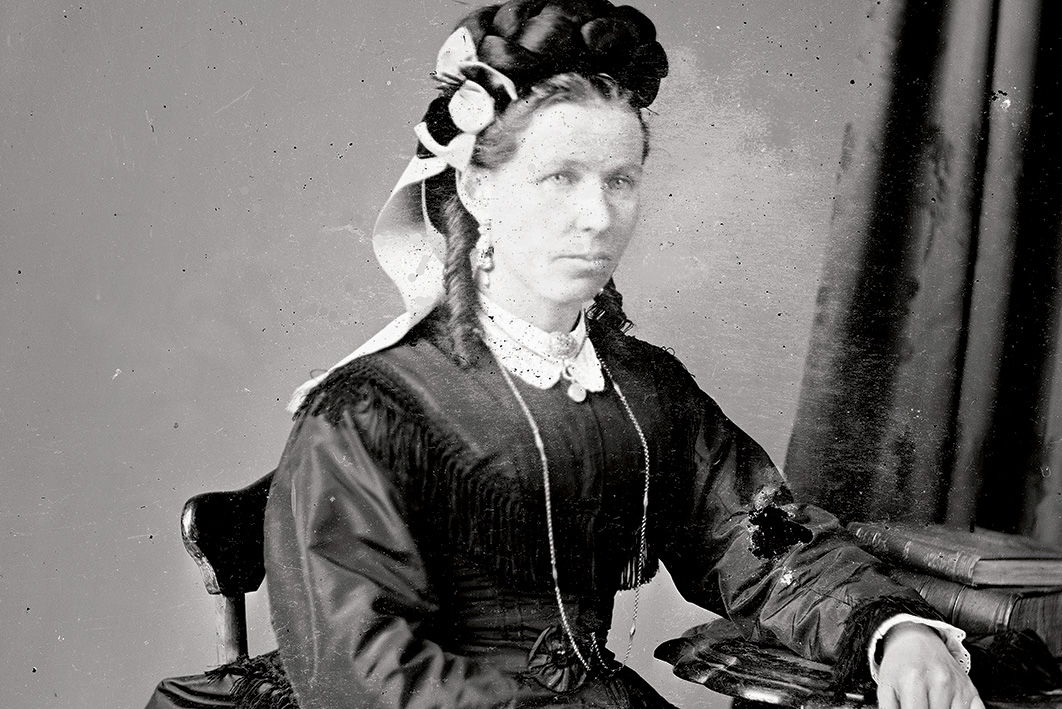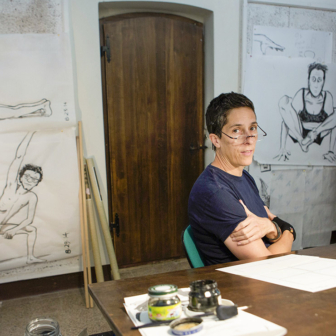Part of our collection of articles on Australian history’s missing women, in collaboration with the Australian Dictionary of Biography
Lucy Hicks — or Lucy Applewhaite, as she was known at the time — was just twenty-seven years old when she took on the job of running Sydney’s Female Immigration Depot in 1861. Located in the old Hyde Park convict barracks in Macquarie Street, the depot accommodated shiploads of single young women when they first arrived from Britain to begin new lives as domestic servants.
Already married and the mother of four children, she soon became even busier when the top floor of the barracks was converted into a destitute asylum and 150 female inmates were transferred from the overcrowded Benevolent Asylum nearby. Still running the Immigration Depot, she also became matron of the newly established Government Asylum for Infirm and Destitute Women, and suddenly found herself to be one of the most senior female public servants in New South Wales.
Lucy Hannah Langdon, later Applewhaite and then Hicks, was born in The Rocks on 5 November 1833. Her father John Langdon, a prosperous merchant, butcher and farmer, died two years later. At sixteen, Lucy married John Lithcot Applewhaite, the thirty-year-old master of the William Hyde, which carried cargo and passengers between Australia, New Zealand and England. Lucy thus spent the early years of her married life at sea and in shipping ports.
The couple left their seafaring lives in the mid 1850s and tried their hands at several businesses with limited success. Lucy’s appointment as matron of the Immigration Depot was thus very timely, both for the money and for the respectability it conferred. Although she had no experience as a matron, she had risen to the challenge of giving birth at sea, coping with extreme weather, and living in cramped quarters with small children for extended periods. As a frequent visitor to British and foreign ports, she could understand the problems facing young women venturing across the world to establish new lives.
As matron of both the asylum and the depot, Lucy carried heavy responsibilities. She enforced discipline and supervised the daily preparation of hundreds of meals, the personal hygiene of inmates, and the cleanliness of the premises and utensils. She quickly learned to delegate, and ensured the inmates did all the hard physical work. She gave birth to the seventh of her nine children with John Applewhaite in August 1862, all the while caring for her five surviving children and supervising shiploads of young women as they arrived at the depot.
John Applewhaite died in May 1869, after almost twenty years of marriage. The following year Lucy, now thirty-seven, married William Henry Hicks, a journalist and family friend, and together they had five children, only one of whom survived to old age. Lucy was forty-six when her fourteenth and last child, Francis, was born in 1879. Her eldest daughter, Mary, served for many years as sub-matron of the asylum before her untimely death, aged thirty-four, in 1885.
Lucy made her reputation as matron of the asylum. At peak times there were up to 300 elderly, frail or infirm women occupying the building; in the early years, many were former convicts, but gradually the asylum evolved into a convalescent hospital for the poorest and neediest. Lucy had to be brisk and efficient just to keep the place running, but she still had some sympathy for “the poor old creatures” under her care. She understood their needs and recognised that elderly and often sick women needed special treatment.
The female inmates did all the work of the asylum. This included cooking and serving meals, cleaning, laundry, sewing and nursing. The institution was largely self-supporting and its costs were low. The strongest women earned a few pennies as assistant cooks, wardswomen and nurses, which encouraged a core of more able-bodied women to remain and carry out the heaviest work.
Hicks was grateful that her role did not extend to deciding who was admitted to the asylum, which was the responsibility of the Government Asylums Board. She understood that the women were not prisoners and were free to depart if they wished. Nevertheless, she kept a close eye on comings and goings, generally only allowing three women at a time out on day leave, and she could discharge those who returned drunk and disorderly.
She was resolutely middle class, maintaining close contact with prominent colonial authorities, and spent freely on clothes, furnishings and accessories for herself and her family. She was also vigilant about hygiene and cleanliness. New inmates were required to take a bath, or a sponge bath if they arrived late at night, and while their clothing was soaked and washed, they were also given a complete change of asylum clothes.
In 1886 the asylum was transferred to new premises at Newington on the Parramatta River. Lucy Hicks was now in her early fifties and had run the depot (now closed) and the asylum for almost a quarter of a century. After the move, a government inquiry heard complaints about poor food quality, lax supervision of medicines, and unkind wardswomen, and Hicks herself was accused of improper conduct, drunkenness and even theft — her formerly dependable conduct replaced, in the words of the inquiry, with a “hard-hearted indifference.”
Hicks was forcibly retired in 1888 but received a substantial pension in recognition of her long and devoted service. Her husband, William, died in 1894. Lucy lived on till 1909, when she died at the age of seventy-five, survived by just five of her children.
Hicks was a central and powerful figure in the operation of benevolent asylums during the colonial era, especially those devoted to the care of women. She set the tone of the depot and asylum in terms of hygiene, nursing care and welfare. Her sad fall from grace was a result of age, weariness, illness, grief and a lack of effective support. She worked during a period in which the old model of providing food and shelter to paupers gave way to hospitals that demanded greater resources and professional training. The evidence suggests that she did her utmost in trying conditions and gave succour to thousands of women, young and old, who passed through her hands. •
Further reading
An Archaeology of Institutional Confinement: The Hyde Park Barracks, 1848–1886, by Peter Davies, Penny Crook and Tim Murray, Sydney University Press, 2013




